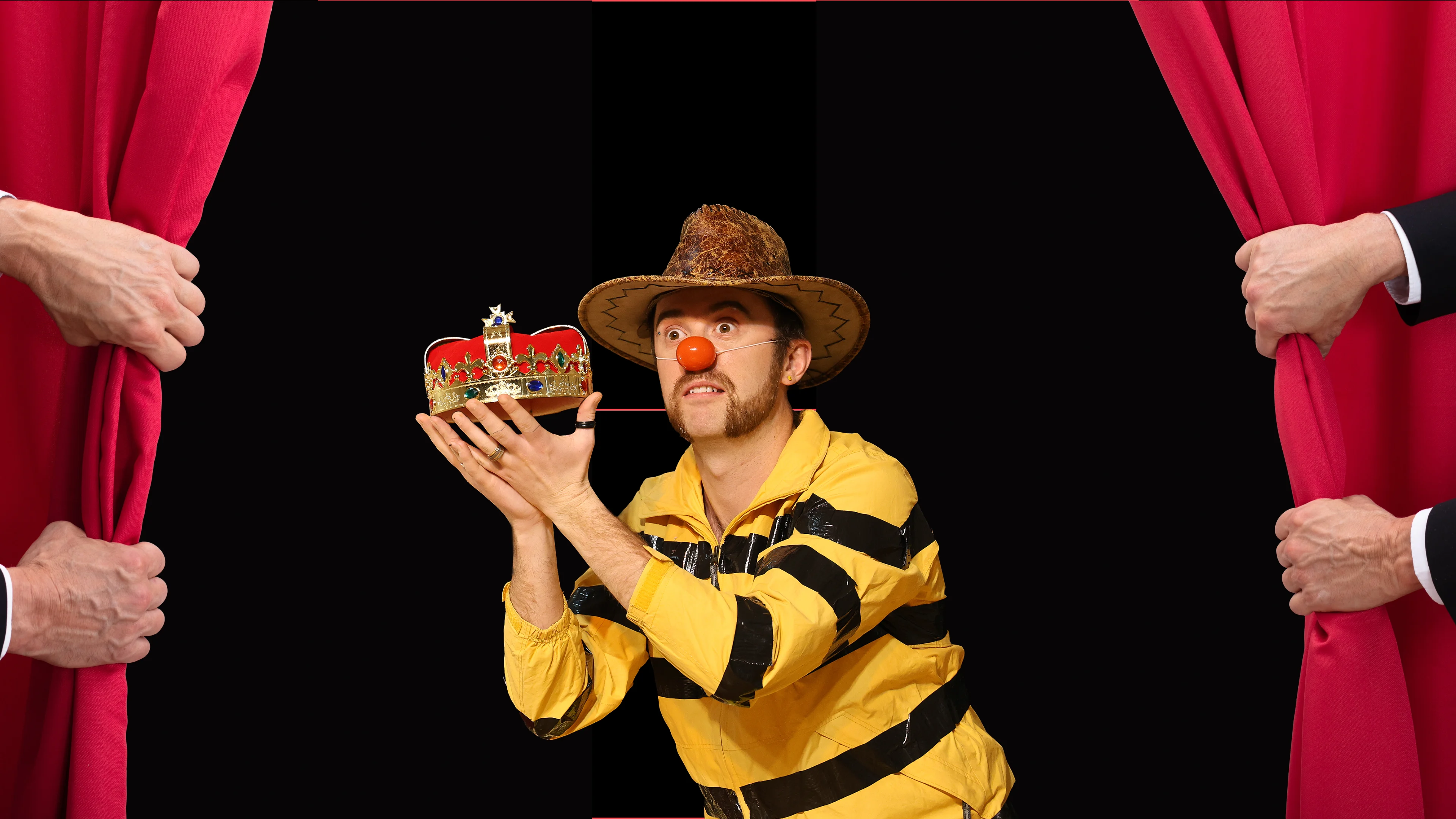
Taster Class In Clown Comedy
Theatre Deli, London
Learn More

Resting the game is the deliberate pause you take between beats of the “funny thing” in a scene. It’s the quiet that makes the laugh louder. The stillness that makes the chaos sparkle.
It’s not about losing momentum - it’s about controlling it.
Builds rhythm and tension: Like scratching an itch... then not scratching it. The audience leans in. They want more. That tension makes the next return of the game juicier.
Creates contrast: Without contrast, everything blurs. If you stay on the game the whole time, it becomes noise. Resting the game lets it pop when it returns. (Think of it as musical phrasing, or breath in between lines.)
World building opportunity: Use the rest time to add specificity and richness to your scene. Who are these characters? What’s this world like? How do they behave when the “game” isn’t happening?
Grounding time: Resting the game is often when grounding does its best work. You remind us what’s normal, real, or expected—so the next moment of play feels even more surprising and delightful.
Emotional variety: A rest might involve vulnerability, stillness, sincerity - or just a change of tone. This emotional gear shift makes the next gag feel new rather than repetitive.
If the game hasn’t landed: Make sure the audience understands what the game is before you try resting it. Otherwise, they might think you’ve just gone off track.
If the rest becomes the focus: Don’t fall in love with your own clever groundedness or emotional realism—remember the game is coming back. Don’t forget to bring it!
Resting the game is a power move. It takes trust, timing, and clarity. But when used well, it transforms repetition into rhythm and chaos into craft.
